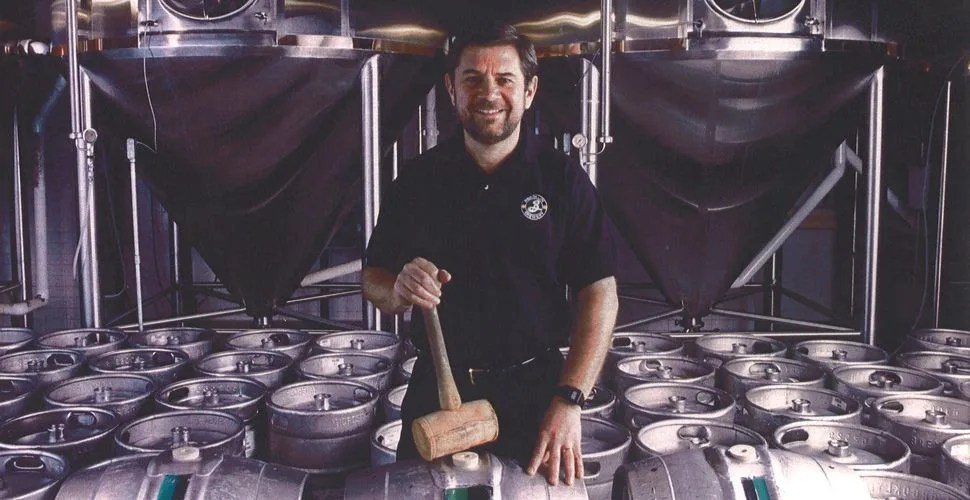It’s 1996, and the New York Daily News runs an article about how a brand-new brewery under construction in Brooklyn will be the neighborhood’s first to open in 20 years. The next day, two limousines pull up outside the brewery’s construction site. The doors swing open, and out come two young men whose chests resemble beer barrels. They tell all the workers to go home, and stay home. Soon, the site is like a deserted movie set. Before leaving, the men deliver a message: The man in charge needs to call us, pronto.
In the craft beer industry, there’s no shortage of courageous characters whose adventurous tales would dominate a happy hour. Just to name a few: Dale Katechis of Oskar Blues rips up the hills of Lyons every morning on his mountain bike; Ken Grossman at Sierra Nevada hikes his tail off in the Sierra Nevada Mountains; and, before starting Boston Beer Company, Jim Koch spent three years as a guide for Outward Bound and summited the highest peak in the Western and Southern hemispheres, Aconcagua.

Funny, then, that a soft-spoken, unassuming guy from New York City would have tales to top them all. Brooklyn Brewery Co-Founder Steve Hindy may not be able to remember the last time he went over the handlebars of a bike or shredded the gnar on the backside of Jackson Hole, but his experience as a war correspondent in the Middle East in the 1980s and his dealings with the mob in the pre-gentrified Brooklyn of the mid ’90s make a bloody elbow or a case of altitude sickness seem like child’s play.
Let’s go back to the beginning. In 1979, when he was stationed in the Middle East as a war correspondent for the Associated Press, Hindy was beginning to take an elevated interest in beer. Locals in Saudi Arabia could be beheaded for home brewing, but American diplomats living there were crafty enough to share their basement brews at American Embassies across the region. That beer, given its potential repercussions, probably tasted pretty damn good. Hindy sure liked it, and admittedly had a thought that it might be nice to have such a flavorful beer back in the States, where light lagers dominated. It was only a dream, though. He had much bigger issues at hand as a war correspondent.
Taking control of the meeting, the mob led Hindy into the bowels of his brewery, into a room without windows. They said they didn’t want to have to hurt him, and that they needed his cooperation.
Over the course of his five-year stint in the Middle East, living Beirut and Cairo, he dodged mortars, avoided gunfire, and filed stories. But it was in 1980 when he would feel the war’s brutal effects firsthand. While on patrol with a United Nations peacekeeping group in Southern Lebanon, his convoy was kidnapped by an Israeli-backed militia. Hindy was held at gunpoint but, through cooperation and the fact that he was an American journalist, eventually set free. The rest of his crew were not so lucky. Three of the men were tortured, and two of them were killed.


